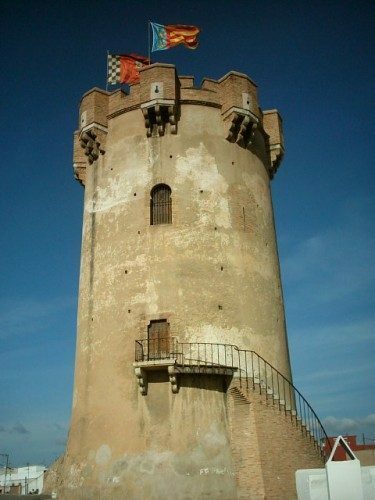25 Examples of Hydroxides
Miscellanea / / July 04, 2021
The hydroxides are combinations between metal cations and hydroxyl anions (OH–). They are inorganic compounds ternaries, since they contain in their structure hydrogen, oxygen and a metallic element. They are obtained when a metallic oxide and water. For example: sodium hydroxide, barium hydroxide, aluminum hydroxide.
When dissolved in water, the hydroxides dissociate and release the hydroxyl group, in addition to the metal cation. Hydroxides have a strong basic character, this is because the hydroxyl group can capture protons, that is why they are also called bases.
Characteristics of hydroxides
According to Stock nomenclatureTo name a hydroxide, it is enough to add to the expression “hydroxide of” the name of the metal that composes it. However, some of the metals that can go into combination with hydroxyl groups can assume more than one state of oxidation, for example, +2 or +3.
In this case, the nomenclature becomes complicated and it is necessary to indicate between parenthesis, after the name of the metal, the oxidation number What does metal work with in Roman numerals?
Another option is to use a suffix in the name of the metal that gives an account of its oxidation state in the molecule (This is known as functional nomenclature). The “bear” ending is the one that corresponds to the lowest oxidation or valence state (of the two that the metal has), the “ico” ending is the one that corresponds to the highest.
To write the formula of the hydroxide, it must be remembered that the number of hydroxyl will be indicated as a subscript and this will coincide with the oxidation number assumed by the metal.
Because of his basic character, the hydroxides cause the litmus paper to change from red to blue, and in the presence of phenolphthalein the solution changes from colorless to pink. Hydroxides react with acids to produce a salt and water; generally these reactions release energy.
The uses of hydroxides
Hydroxides have different uses in everyday life. For example, soda or caustic potash (sodium and potassium hydroxide, respectively) are used to unclog pipes.
The magnesium hydroxide is known as antacid, many stomach digestives include it in their formulation. At higher concentrations, it has laxative power.
The aluminum hydroxide it is also used as an antacid in so-called "fruit salts". Calcium hydroxide is widely used in construction, it is known in this field as “slaked lime”.
Examples of hydroxides
Twenty-five hydroxides are listed below, by way of example:
- Sodium hydroxide, NaOH. It is used in the textile industry, it is also used to make crayons and paper. It is also used in different types of cleaners, such as paint.
- Barium hydroxide, Ba (OH)2. It is used in the manufacture of ceramics and different types of poisons.
- Aluminum hydroxide, Al (OH)3. It is used to relieve various stomach discomforts.
- Zinc hydroxide, Zn (OH)2. It is used as an adsorbent; Nanoparticles of this hydroxide have also been formulated.
- Ferric hydroxide, Fe (OH)3. It is used in the manufacture of paints and medicines.
- Ferrous hydroxide, Fe (OH)2. It is widely used in the metallurgical industry.
- Cupric hydroxide, Cu (OH)2. It is used as a laboratory reagent and also as a fungicide.
- Cuprous hydroxide, CuOH. Similar to cupric hydroxide (Cu (OH)2).
- Calcium hydroxide, Ca (OH)2. It is the so-called dead lime or slaked lime, so important in construction. It is also used in the farming and in the chemical, pharmaceutical and food.
- Lithium hydroxide, LiOH. It is used to remove carbon dioxide in purification systems.
- Chromium (III) hydroxide, Cr (OH)3. It is used in the manufacture of paints, especially to achieve green colors.
- Lead (IV) hydroxide, Pb (OH)4. It is mainly used in cable covers.
- Gold (III) hydroxide, Au (OH)3. It is used in many fields of medicine and ceramics.
- Silver hydroxide, AgOH. It is used to make certain products that work to detect chloride in other solutions.
- Mercuric hydroxide, Hg (OH)2. It is used less and less for its toxicity.
- Beryllium hydroxide, Be (OH)2. It is used as raw material in obtaining metallic beryllium.
- Lead (II) hydroxide, Pb (OH)2. It is often used for coatings.
- Platinum (IV) hydroxide, Pt (OH)4. It is used for the production of extremely fine wires.
- Cobalt (II) hydroxide, Co (OH)2. It is used in the preparation of cobalt salts.
- Manganese (III) hydroxide, Mn (OH)3. It forms different types of green crystals.
- Strontium hydroxide, Sr (OH)2. It absorbs carbon dioxide from the air.
- Magnesium hydroxide, Mg (OH)2. It is used as an antacid or laxative.
- Tin (II) hydroxide, Sn (OH)2. It is used in the dyes of the fabric industry.
- Ammonium hydroxide, NH4Oh. It is used primarily in food processing.
- Cadmium hydroxide, Cd (OH)2. Found in industrial accumulator batteries.



